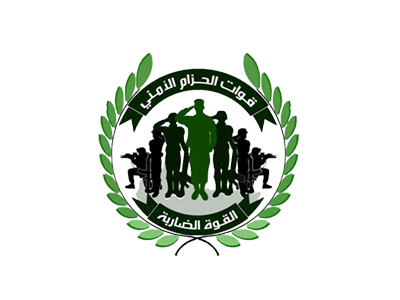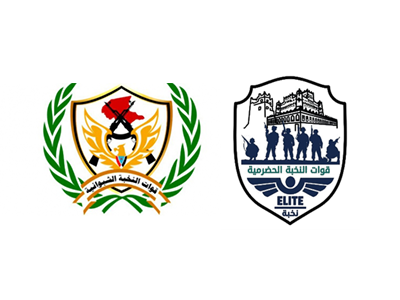Yemen Conflict Observatory
Actor Profile
Southern Transitional Council
More information
- More Information
Affiliated Actors
ACLED actors affiliated with the Southern Transitional Council:
- Pre-May 2017 (pro-UAE actors that predated the establishment of the STC)
- Hadrami Elite Forces
- Security Belt Forces
- Shabwani Elite Forces
- Post-May 2017
- STC: Southern Transitional Council
- STC: Southern Transitional Council (Aden Security)
- STC: Southern Transitional Council (Asifah Brigade)
- STC: Southern Transitional Council (Facilities Protection Force)
- STC: Southern Transitional Council (Hadrami Elite Forces)
- STC: Southern Transitional Council (Hazm Brigades)
- STC: Southern Transitional Council (Lahij Security)
- STC: Southern Transitional Council (Saiqa Brigades)
- STC: Southern Transitional Council (Security Belt Forces)
- STC: Southern Transitional Council (Shabwani Elite Forces)
- STC: Southern Transitional Council (Shabwani Defense Forces)
- STC: Southern Transitional Council (Support and Reinforcement Brigades)
- Post-April 2022
- Military Forces of Yemen (2022-) Presidential Leadership Council - STC
- Military Forces of Yemen (2022-) Presidential Leadership Council - STC Asifah Brigade
- Military Forces of Yemen (2022-) Presidential Leadership Council - STC Hadrami Elite Forces
- Military Forces of Yemen (2022-) Presidential Leadership Council - STC Hazm Brigades
- Military Forces of Yemen (2022-) Presidential Leadership Council - STC Saiqa Brigades
- Military Forces of Yemen (2022-) Presidential Leadership Council - STC Shabwani Defense Forces
- Military Forces of Yemen (2022-) Presidential Leadership Council - STC Support and Reinforcement Brigades
- Police Forces of Yemen (2022-) Presidential Leadership Council - STC Aden Security
- Police Forces of Yemen (2022-) Presidential Leadership Council - STC Facilities Protection Force
- Police Forces of Yemen (2022-) Presidential Leadership Council - STC Lahij Security
- Police Forces of Yemen (2022-) Presidential Leadership Council - STC Security Belt Forces
Methodology Links
Coding decisions around the Yemen war
- A brief overview of ACLED’s coding and sourcing methodology for Yemen
- A brief overview of the most frequently asked questions by users of ACLED data
- Guides for using and accessing ACLED data and documentation for ACLED’s core methodology
The Southern Transitional Council (STC) is a United Arab Emirates-backed secessionist political organization founded and led by Aydarus al-Zubaydi. Established in May 2017, the STC aligned with the anti-Houthi camp, though engaging in political and military competition with the Internationally Recognized Government (IRG). Despite joining the Presidential Leadership Council in April 2022, the STC claims to represent the will and interests of the southerners, it advocates for the south’s peaceful secession, and it firmly opposes the Islamist Islah party. STC President Zubaydi is also the supreme commander of the Southern Armed Forces, which include several military brigades and police forces integrated into the IRG’s defense and interior ministries.
Associated Actors
The Southern Transitional Council comprises multiple actors. Profiles of select actors are available below:

Security Belt Forces (SBF)
The Security Belt Forces are STC-aligned paramilitary units carrying out counter-terrorism and law enforcement activities in southern Yemen

Elite Forces
The Elite Forces are STC-aligned military units engaged in stabilization and counter-terrorism operations
Interactive Map of STC Activities
This dashboard encompasses political violence events associated with the Yemen war since the onset of the regional conflict on 26 March 2015. It includes all political violence events in Yemen, and only war-related events in Saudi Arabia and the UAE. By default, the map displays data for the period beginning with the UN-mediated truce, on 2 April 2022, up to the most recent week.
Filters on the left allow users to define a time range and select events involving one or more of the sub-actors affiliated with the main umbrella actor. It is also possible to focus on specific governorates of Yemen and obtain Admin1-level statistics by clicking on the relevant areas on the map.
STC Leadership
President of the STC Aydarus al-Zubaydi hails from al-Dali. Since the mid-1990s, he has emerged as a main leader in the southern Yemen secessionist movement.1Stephen W. Day, ‘The Role of Hirak and the Southern Transitional Council,’ in Stephen W. Day and Noel Brehony, ‘Global, regional, and local Dynamics in the Yemen Crisis,’ Palgrave Macmillan, 2020, p. 256-257 In 2015, during the Houthi-Saleh advance, he led the resistance in al-Dali and Lahij, and later served as Aden’s governor until April 2017. Zubaydi’s faction of the STC overlaps with the historical Tughma group, including leaders from al-Dali, Lahij, and Hadramawt, which opposed the Zurma faction hailing from Abyan and Shabwa in the 1986 civil war. Although al-Dali-born leaders dominate the STC, other factions, like the Yafii wing and the Southern 33 group, have also been appointed to senior positions.2Brian Carter, ‘Understanding Military Units in Southern Yemen,’ Critical Threats, 16 December 2022 The STC leadership recently underwent restructuring, with the appointment of Giants Brigades leader Abdulrahman al-Muharrami and former Hadramawt Governor Faraj al-Bahsani as vice presidents. Yet, the relationship with the UAE-backed leader of the Joint Forces, Tariq Saleh, remains tense.
Historical Background
The emergence of the STC is inextricably linked with the history of the Southern Movement and the crucial role played by the UAE in Yemen. In 2007, former military officers from al-Dali established the Southern Movement (often referred to by its name in Arabic, al-Hirak al-Janubi, or just Hirak), advocating for the secession of the southern provinces3‘Southern provinces’ refers to the former People’s Democratic Republic of Yemen (PDRY) provinces, namely: Abyan, Aden, parts of al-Dali, al-Mahra, Hadramawt, Lahij, Shabwa, and Suqutra. from the north, and seeking resolution for grievances dating back to the 1994 Yemeni civil war. In 2015, when the Houthi-Saleh alliance advanced southwards to capture Aden, many Hiraki activists took arms and joined the Southern Resistance (SR), supported by the UAE.
Among them, Aydarus al-Zubaydi – a Hiraki leader from al-Dali – rose to prominence spearheading the liberation of al-Dali and Lahij from the Houthis, and was later installed as commander-in-chief of the SR. Appointed governor of Aden in December 2015,4Al Mawqea post, ‘New republican decisions to appoint a governor for Aden and an ambassador for Yemen in the UAE,’ 7 December 2015 Zubaydi strengthened his ties with the UAE and contributed to the establishment of the Security Belt Forces (SBF). However, relations with the Internationally Recognized Government (IRG) rapidly soured. In February 2017, clashes erupted between IRG and UAE-backed forces over the control of Aden’s airport. In an attempt to curb the influence of Zubaydi’s UAE-backed clique, President Abdrabbuh Mansur Hadi sacked the governor.
In response, Zubaydi announced the establishment of a 26-member Southern Transitional Council on 11 May 2017.5New Arab, ‘Banished Aden governor forms independent “South Yemen” council,’ 11 May 2017 As the STC’s commander-in-chief, he claimed to represent the southern people’s will and interests, forming an executive authority known as the Praesidium with diverse southern political figures. Furthermore, he took the lead of several UAE-backed forces – including the SBF, Support and Reinforcement Brigades, and Elite Forces – assuming the title of Supreme Commander of the Southern Armed Forces. In subsequent years, STC-IRG relations deteriorated, leading to occasional violent skirmishes in Aden and neighboring areas. In January 2018, the SBF seized control of most of Aden, ousting IRG forces. In August 2019, a Houthi missile strike in Aden killed several SBF fighters, including prominent SBF commander Abu Yamama al-Yafii. The STC blamed the IRG for enabling the attack, sparking clashes in the neighboring Abyan and Shabwa.
In November 2019, IRG-STC tensions were temporarily resolved with the Riyadh Agreement, a Saudi-brokered deal mandating a political and military overhaul. However, a stall in the implementation of the agreement led the STC to declare self-rule in April 2020.6Al Jazeera, ‘Separatist group announces self-rule in southern Yemen,’ 26 April 2020 In July 2020, the approval of an ‘acceleration mechanism’ convinced the STC to rescind the self-rule declaration, and eventually a new cabinet including STC members was established in December of the same year. The novel power-sharing government granted the STC with political recognition and provided them an avenue to partake in United Nations-sponsored peace talks.7Ibrahim Jalal, ‘The Riyadh Agreement: Yemen’s new cabinet and what remains to be done,’ 1 February 2021
On 7 April 2022, during the Riyadh talks, President Hadi relinquished his powers and established the Presidential Leadership Council (PLC), an eight-member executive body led by Rashad al-Alimi and that included Zubaydi. The establishment of the PLC was instigated by Saudi Arabia and the UAE, intending to replace Hadi’s ineffective leadership and create a political equilibrium within the anti-Houthi coalition. However, lacking a common political vision, the PLC bloc proved equally ineffective, failing to confront the Houthis unitarily, while new internal tensions arose in Shabwa, Abyan, and Hadramawt.8Maysaa Shujaa al-Deen, ‘The Presidential Council’s Year of Failure,’ Sanaa Center for Strategic Studies, 11 July 2023
On 8 May 2023, Zubaydi decreed the establishment of the Supreme Executive Leadership of the STC’s presidency. The new executive body includes southern PLC ministers, governors, and other prominent figures, aiming to establish the STC as an umbrella organization representing the southern cause. Pursuing this purpose, Zubaydi has appointed as vice presidents three southern PLC members: former Hadramawt Governors Faraj al-Bahsani and Ahmad Bin Burayk; and Giants Brigades Commander Abdulrahman ‘Abu Zaraa’ al-Muharrami.9Southern Transitional Council, ‘The issuance of Resolution No. (2) of 2023 of the President of the Southern Transitional Council to reconfigure the Presidency of the Southern Transitional Council,’ 8 May 2023 This move ostensibly unified the UAE-backed forces under the STC umbrella. Furthermore, several southern political factions signed a National Charter demanding “the restoration of the state of the south with its political and geographical borders according to what was before May 22, 1990.”10New Arab, ‘Yemen’s STC, other factions sign ‘national charter’ calling for partition,’ 9 May 2023
In late 2023, amidst ongoing peace talks between the Houthis and Saudi Arabia, the STC lamented its marginalization and stressed the importance of including the Southern Issue in the negotiations. Following the Houthi Red Sea escalation, the STC aligned decisively with the US-led international coalition. On 16 January 2024, Zubaydi demanded “military equipment, capacity building, and training for ground forces, as well as intel sharing” to complement US-UK airstrikes against the Houthis.11Southern Transitional Council, ‘President Al-Zoubaidi: “Airstrikes against Houthis are not enough,”’ 16 February 2024 Domestically, the STC formed the House of Commons (Majlis al-Umum), a unified internal entity comprising the group’s key executive and legislative bodies.12Southern Transitional Council, ‘STC President Inaugurates House of Commons in Aden,’ 2 January 2024
Timeline
- 2017
- 11 May | Aydarus al-Zubaydi establishes the Southern Transitional Council (STC)
- 2018
- Jan. | Battle of Aden
- 2019
- Aug. | UAE troops drawdown from Yemen
- Aug. | STC forces evict the government from Aden
- 5 Nov. | STC and IRG sign the Riyadh Agreement
- 2020
- 26 Apr. | STC declares self-rule in areas under their control
- Jul. | STC and IRG approve an ‘acceleration mechanism’ to implement the Riyadh Agreement
- 29 Jul. | STC rescinds declaration of self-rule
- 18 Dec. | President Hadi forms a new cabinet led by Muin Abdulmalik
- 2022
- 7 Apr. | President Hadi relinquishes powers and establishes the PLC
- 2023
- 8 May | Zubaydi establishes the supreme executive leadership of the STC’s presidency and announces the National Charter
- 2024
- 2 Jan. | STC establishes the House of Commons
- 16 Jan. | Zubaydi requests US military support against the Houthis
